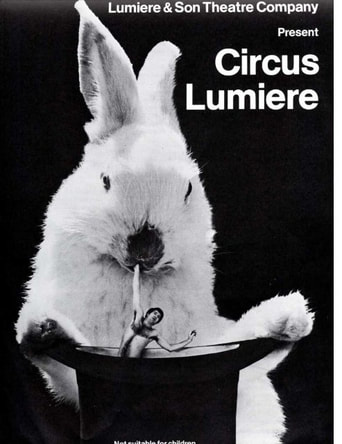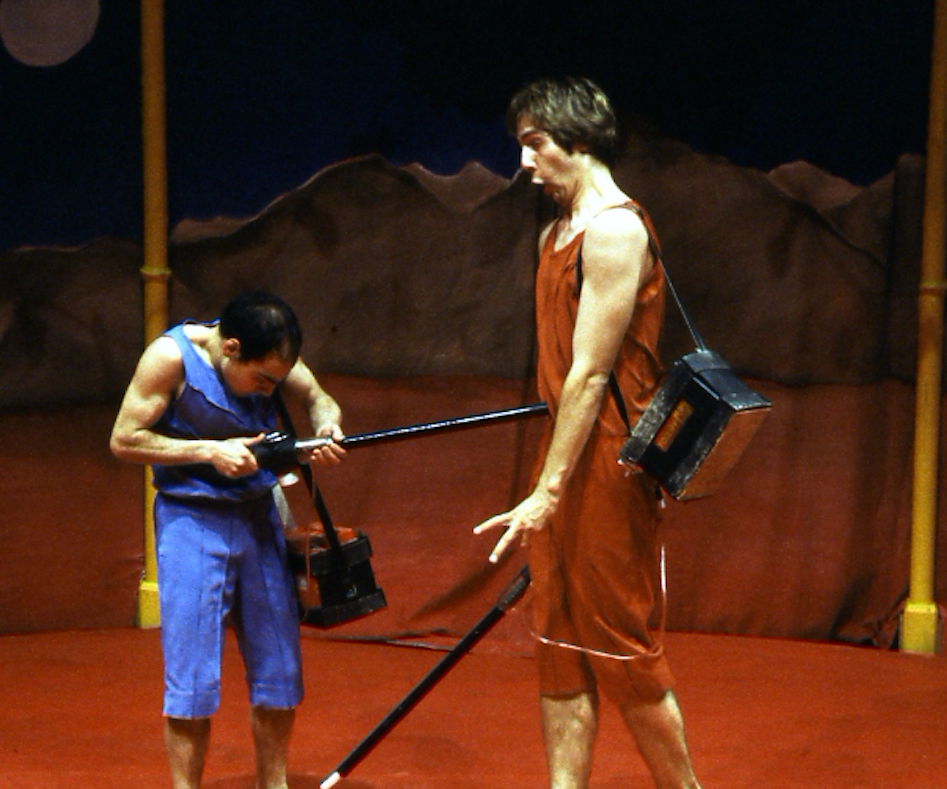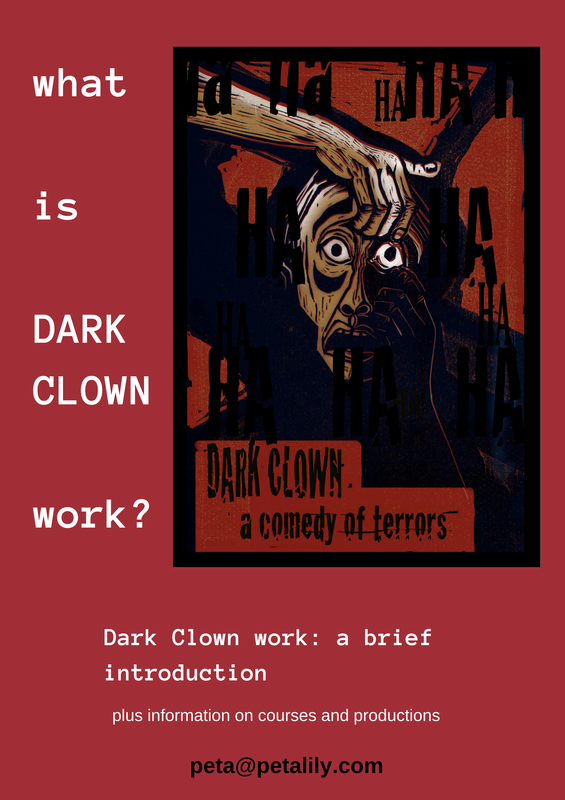 Lumiere & Son Theatre Company's 1980 show: 'Circus Lumiere'
Lumiere & Son Theatre Company's 1980 show: 'Circus Lumiere' UK /ˈɪm.plɪ.keɪt/ US /ˈɪm.plə.keɪt/
to show that someone is involved in a crime or partly responsible for something bad that has happened.
Implicating the Audience
I use the term Implicating the Audience to refer to the Dark Clown practice where the performer or ensemble manage to create the conditions whereby the audience feel that they are somehow 'on the hook'. Although all audiences know that they paid for their ticket and walked in to watch a composed portrayal, they can, via the suspension of disbelief, feel conflicted or shamed in their witnessing and even to a degree, culpable. While no one may actually think: 'Oh my, I must rush on stage and help these people', they feel compelled and conflicted that 'It is not me suffering over there.'
Allied to this is the Dark Clown concept of Troubled Laughter whereby the audience laughs and at some level feels implicated by their laughter.
Inspiration for Implication
In 1980, the seminal Lumiere & Son Theatre Company created a show called Circus Lumiere.* It was performed in a custom-built five pole tent. The whole show was memorable and ground-breaking, but there was one particular scene which left a marked impression.
What follows is an account of how I remember the scene ran.
Two clowns appear in the ring. A big one and a small one. The show so far has been action-packed so their stillness is intriguing. They wear rather traditional clown costumes. They are looking at us, the audience, and they exchange looks between themselves. The audience laugh because the clowns seem non-plussed; inert, nervous and indecisive. Aren't clowns meant to somersault and bound out into the ring?
Whenever we laugh they turn to us and back to each other again, with some alarm in their eyes. They are intent, alert. It is only in retrospect that we realise they are making a difficult decision.
The tall clown turns his head but he is not looking at the small clown. We now notice there is a trestle table onstage (in the ‘ring’ of the circus tent) and on it is a large rectangular item with gauges and dials. It looks to be a piece of electrical equipment. The little one is looking at it now, too.
The audience has been nicely set into a habit of laughter and each head turn is a laughter nudge. The big one walks slowly towards the machine and picks up something connected to the machine. He returns to his position beside the small clown. We realise the item is a cattle prod.
We laugh and think ’oh no!’ But we have laughed and that is clocked by the clowns. (Had we made any other sound or no laughter, they still would have clocked us - we are still sitting in our seats and they still would have been obliged to continue - ‘the show must go on’).
The little clown receives an electric shock and jitters about in a startling but ridiculous way. He composes himself afterwards but it looks like it was not a pleasant experience. We laugh – out of surprise at what happened; as a release from the cleverly built up suspense; and in unconscious mirroring of the rhythm of the little clown's movements.
The big one looks at the little one, in some discomfort. The little one looks at the big one. We laugh again, nervously. The little one clocks this and the little one looks at the big one with an expression of some urgency. (‘If they liked it once, they should like it again’**) – the little one is now in the absurd predicament of using his eyebrows to actually encourage the big one, who looks a little traumatised. The big one hesitates but again applies the baton to the small one, who again receives the shock and jitters about. According to the rule of three, all this happens again. With repeated laughter from us in the audience.
The clowns look at the audience, calibrating. They look at each other. With some head turns their eyes don’t connect because the other clown is looking at the audience. The uncertainty is prolonged. Eventually they share a look.
The big one walks again to the table. Will he put down the prod and do something else?
No, his hand reaches out and he touches a dial … Why did we not imagine this? ... and turns it up. And we laugh. We are 'on the hook': because of us, the small clown will suffer more. We did not bray for it ... but our laughter (and the clowns’ submission to their role) means the small clown must suffer because of us. Our 'guilt' and gut-punch groans of 'remorse' makes our laughter richer. We laugh through multiple shocks. It is truly hilarious. It is not a cruel laugh, it is a conflicted laugh - we know it's a piece of theatre but the clowns are played so well that we feel somehow guilty.***
Performing Pain
Hilary Westlake, co-founder of Lumiere & Son Theatre Company (working closely with writer David Gale) was very astute at finding the essence of the thing she was exploring. With the Big and Little Clown segment they had asked 'What Are Circus Clowns?' and decided that, as traditional Circus Clowns perform a lot of slapstick (the giving and receiving of hits, slaps, pushes and falls) that their job could be in essence to 'hurt and be hurt for the audience's pleasure'. When Hilary directed a piece called 'Wounds' for Three Women Company (the theatre I co-founded in 1980 with Tessa Schneideman and Claudia Prietzel) she decided that what makes women different from men. That we bleed. We performed in white costumes and boxing boots and the stage action was punctuated by the appearance of blood. From a breast, from a mouth, from a crotch, finally raining down from inside an umbrella.
*Director and company founder, Hilary Westlake has archived Lumiere & Son's work. You can see the programme for Circus Lumiere here.
** Philippe Gaulier, live London course circa 1984
*** Associated with Implication, is another key element of the Dark Clown work - Troubled Laughter which I first experienced while watching a specific scene in Pip Simmons' thrilling and devastating production An Die Musik. I mention it in a footnote to the recent Trigger post and also in the Comedy of Terrors post. I think it was the same year I first saw Circus Lumiere.
In the image here below, recently forward to me by Hilary Westlake, I see a section of the piece I did not remember! Here the little clown shocks the tall clown, possibly by mistake (as he fiddles with the controls) . They are both armed with prods and battery packs.

 RSS Feed
RSS Feed
